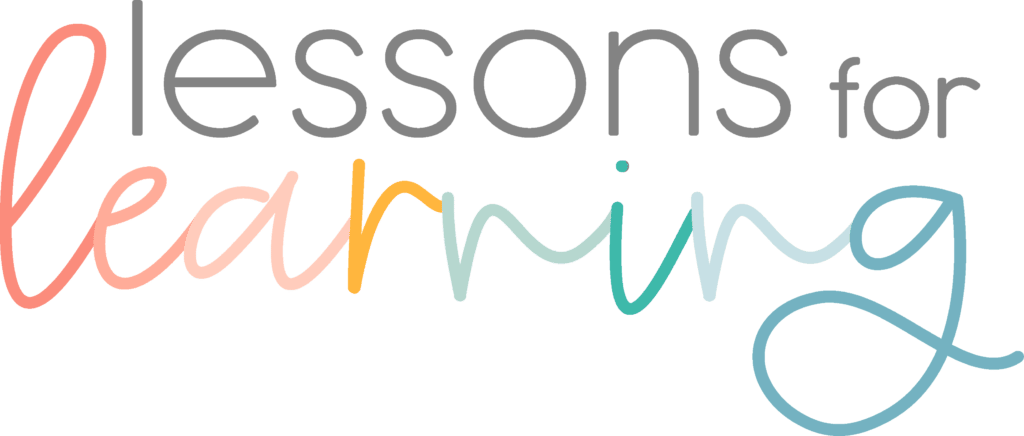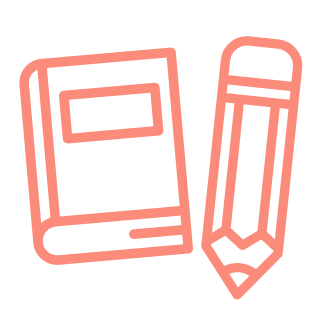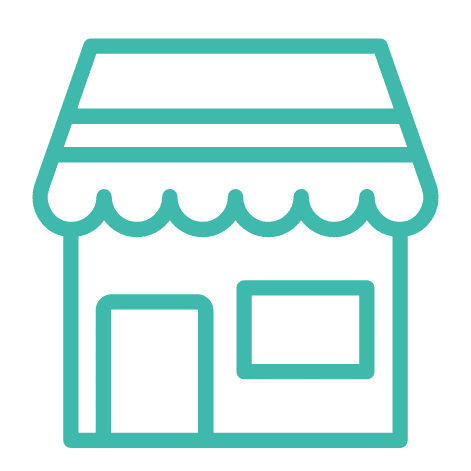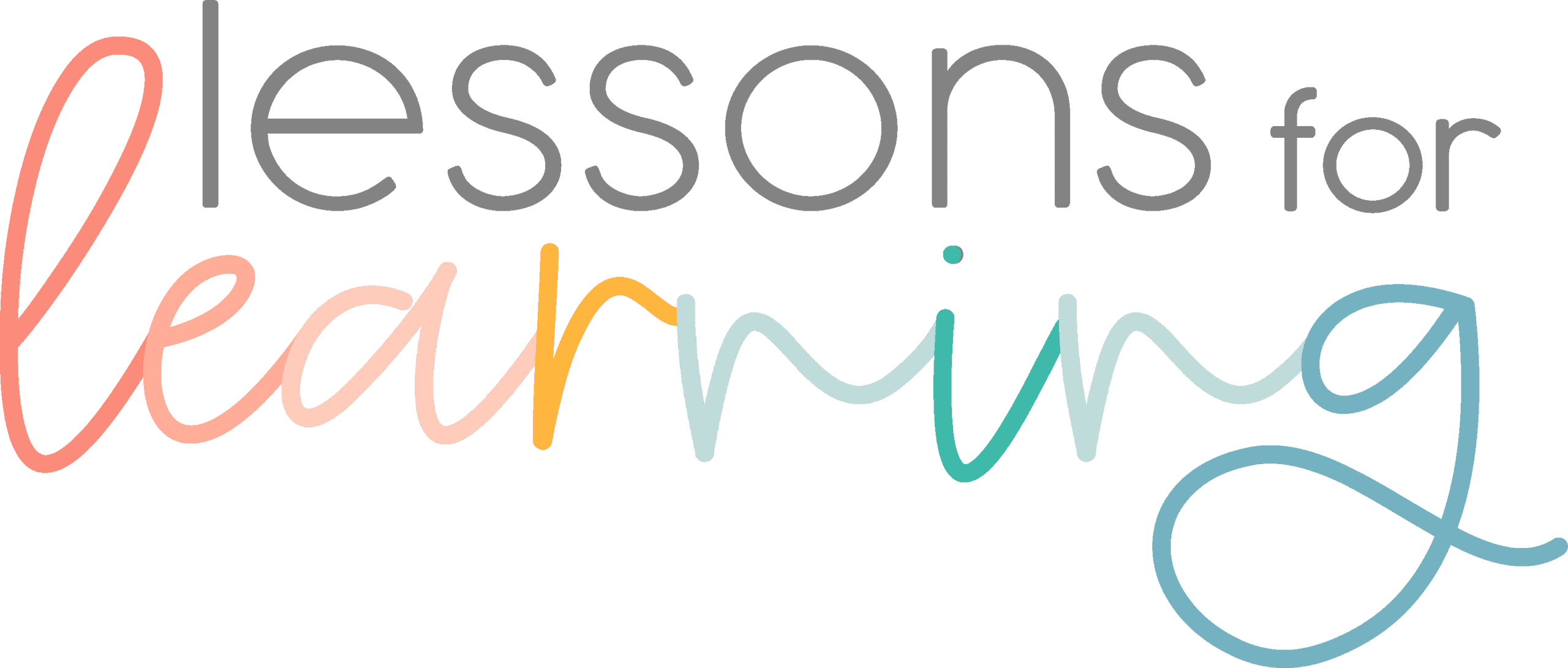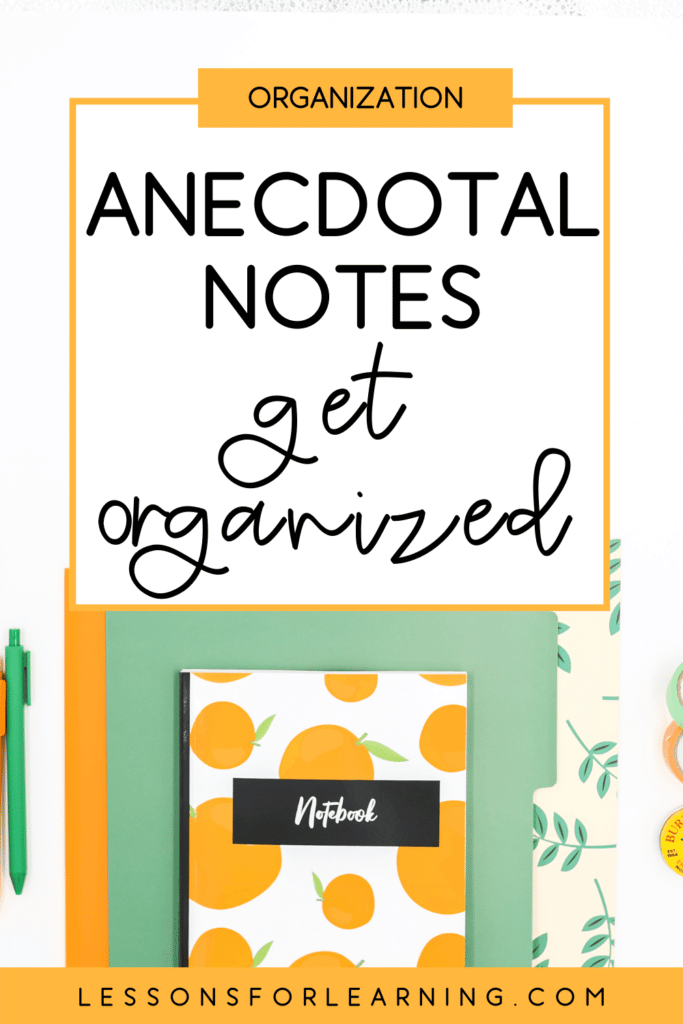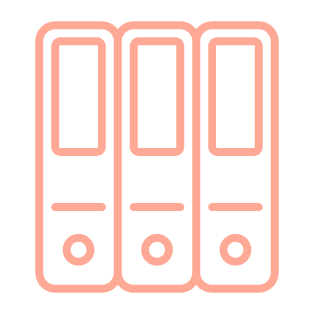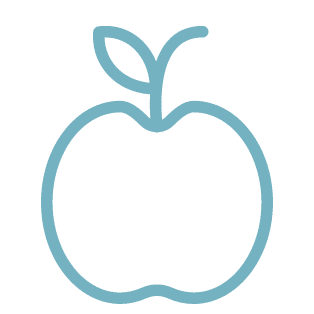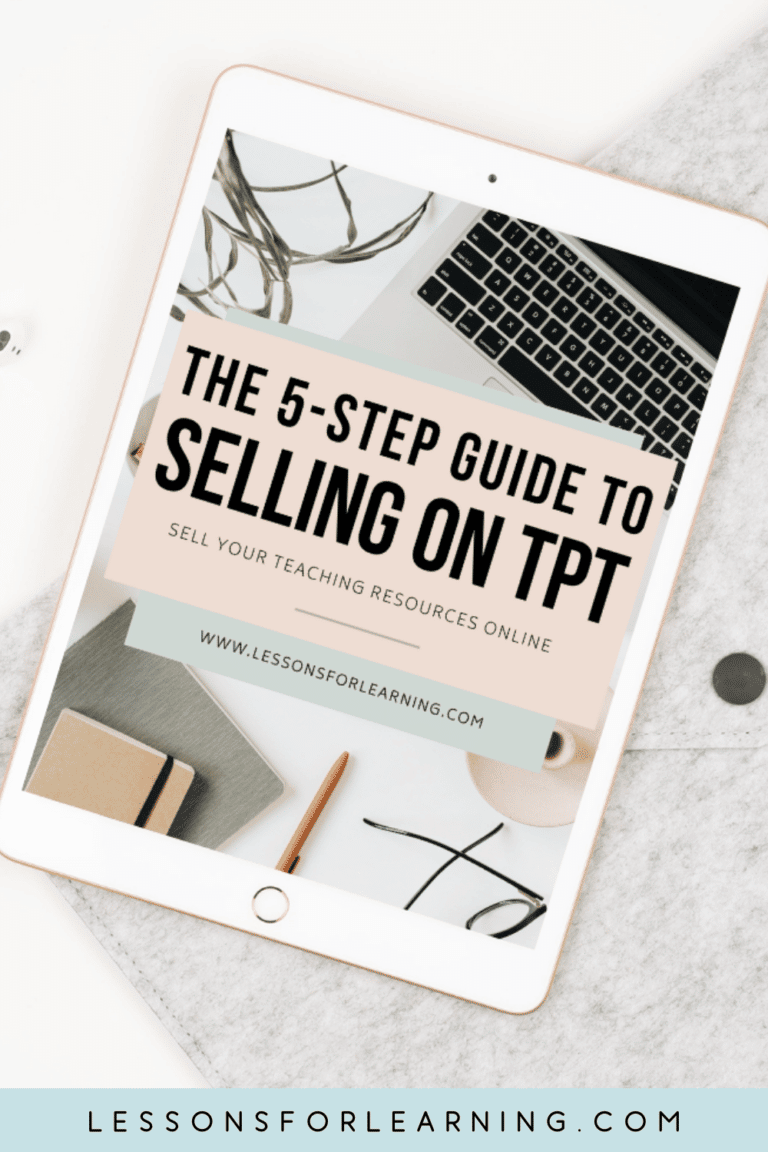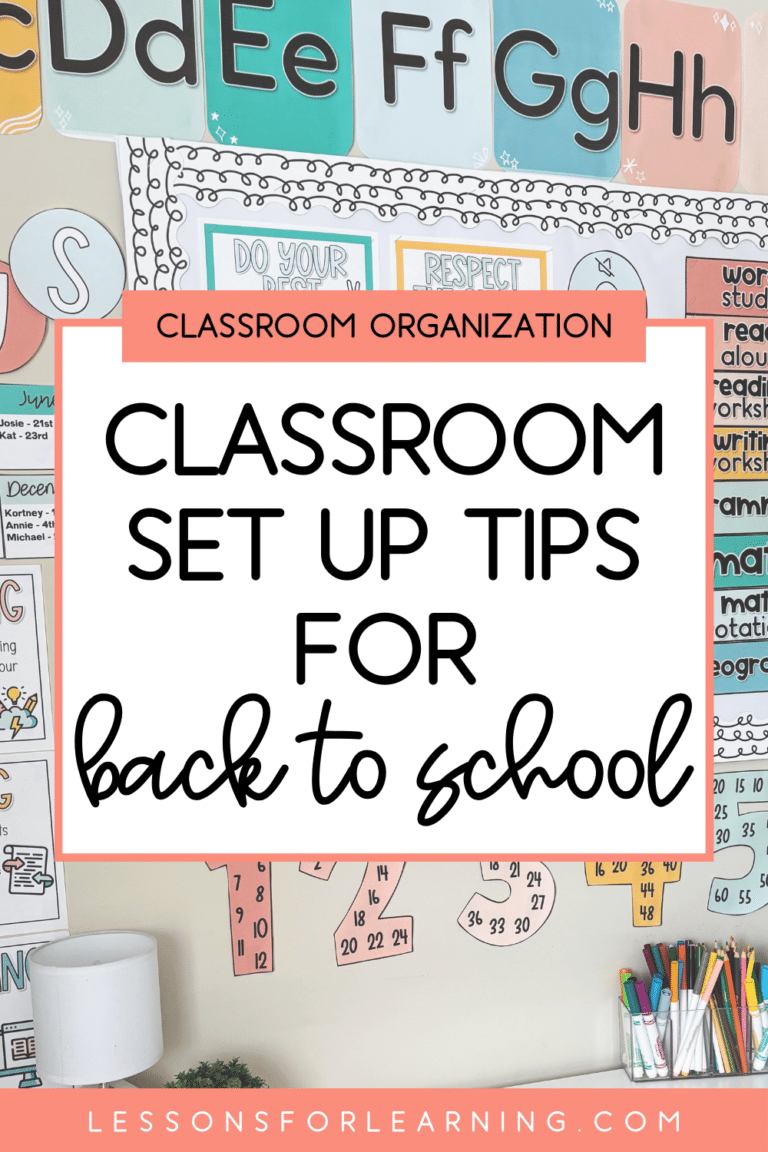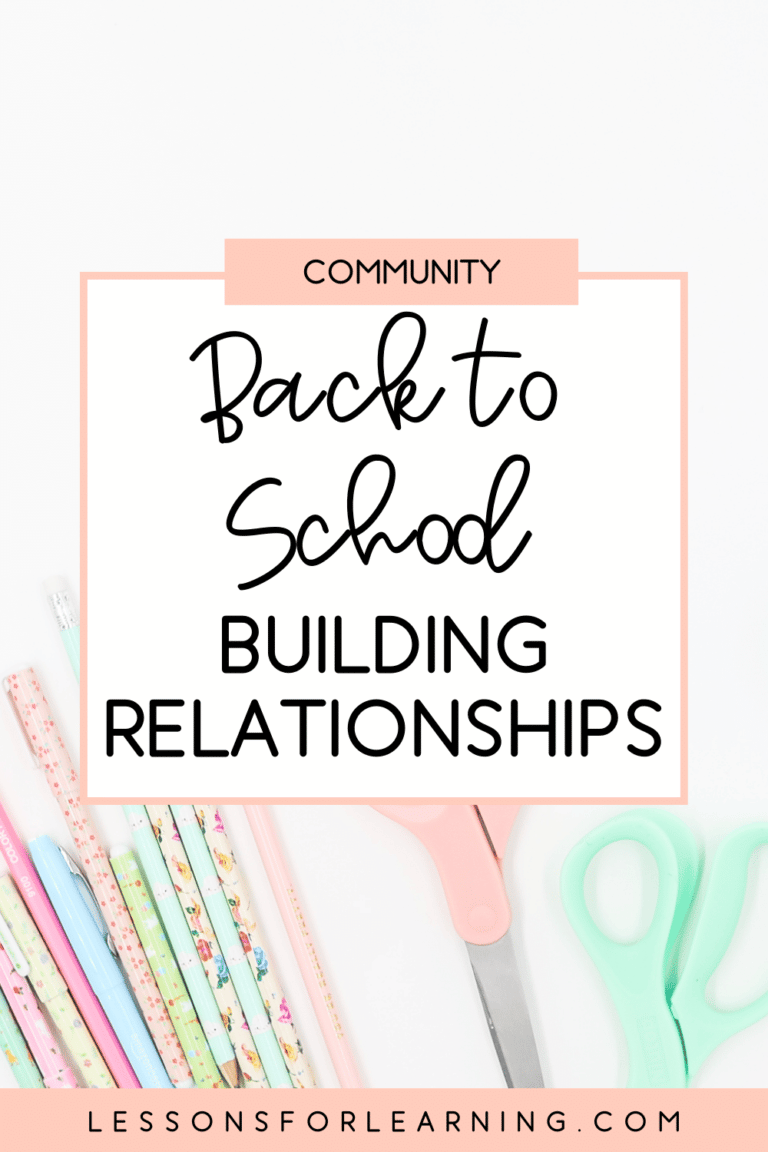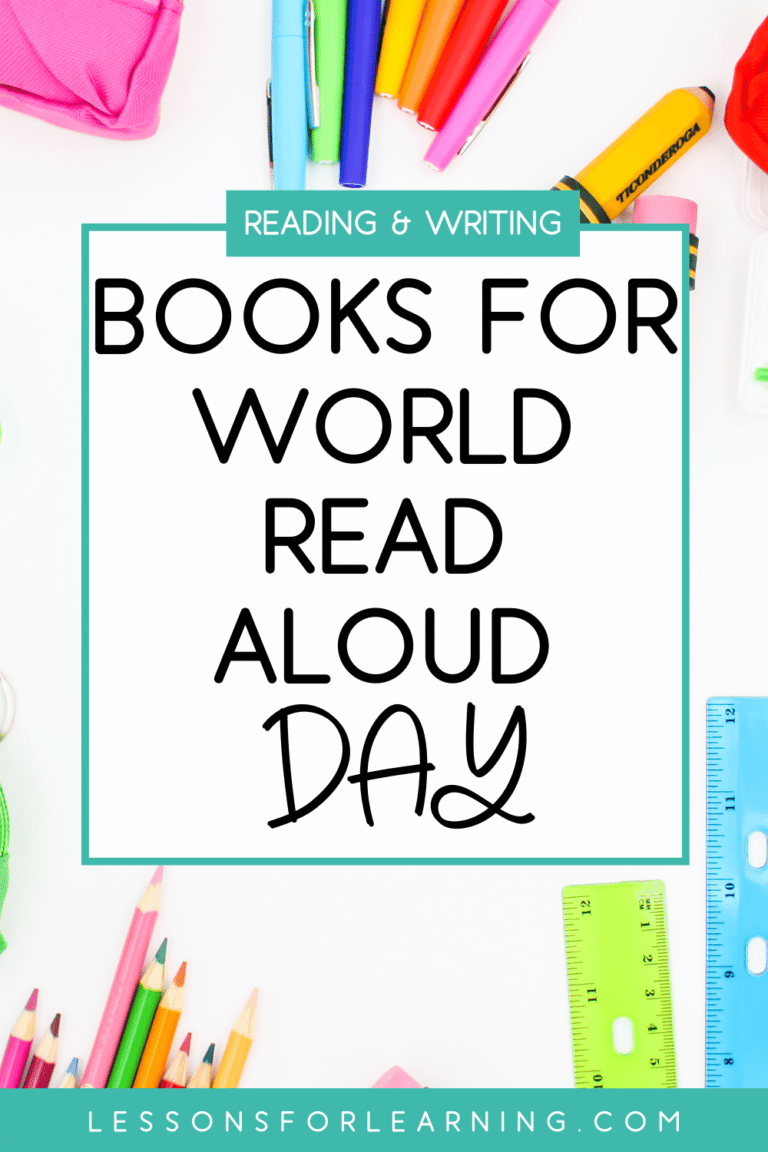During my first year, I struggled to understand what good, formative assessment looked like. I understood that I needed anecdotal notes. I understood that they should be organized… but I didn’t really know what to write, when to write it, or how to keep it all in order for report cards. So, in the last couple of years I made it my mission to get it all figured out and I think I FINALLY have. Here are a few tips for using anecdotal notes for assessment.
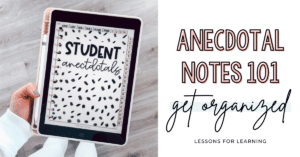
What are Anecdotal Notes?
In short, they are written records of observations. As a teacher, your anecdotal notes can include student behavior and/or academic progress. I prefer to keep behavior and academics separate, since they would be used for different areas of the report card.
For example, a teacher may have a binder of anecdotal notes that they use during guided reading. In that time, they will note a couple of reading behaviors they have noticed in individual students (e.g., reading fluently; started an L level book; struggled to remember the -sh blend)
How Can Anecdotal Notes Support Assessment?
When taken correctly, anecdotal notes can be SO helpful for report cards and school meetings. Rather than a letter or number grade, anecdotal notes are more personal & specific to what the student is ACTUALLY doing.
Consider this: a student gets a C- on a math assessment and the parent(s) want to chat about it. During the phone call, you reference a few different, specific notes you have taken during guided math or while working with the student one-on-one that help the parent understand the skills they have mastered & are working towards, in more observational and specific language than an assessment can.
Alternatively, if you are chatting with administration about a student’s behaviour in your class, your rough accounts will only go so far. If you have taken consistent anecdotal notes, you will have a lot more evidence to support the need for intervention.

When to Take Anecdotal Notes & How to Organize them Effectively:
Anecdotal notes can be taken anytime. My favourite way to get started is to use them during small groups. For example, if your mini-lesson or focus for the day was a specific vowel sound, you would write that at the top of your page and then under each student, write out which words they were able to say with or without support.
Organizing the notes is a whole other situation. In my first year, I tried to have a cute little guided-reading binder, with post-it notes, dividers and sections but it quickly became a mess. Sticky notes falling out and other observational notes making their way into the binder, uncategorized & lost.
Now, I use my Goodnotes Anecdotal notebook & iPad to keep track of everything. If you don’t use an iPad/Tablet, try out my Google Slides Anecdotal Notebook!
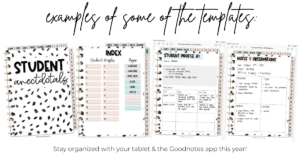
This digital notebook will help you keep all of your student observations, anecdotal notes, checklists and class lists organized in one, easy-to-access document. It features clickable, linked tabs on each page as well as an index to help you navigate all of your different students & subjects.
⭐️⭐️⭐️PLEASE NOTE: I use this with the Goodnotes 5 app, an iPad and an Apple Pencil. The download of this product DOES NOT include the Goodnotes app – that is a separate purchase through the app store. *Works on Notability ($) as well.⭐️⭐️⭐️
Unfamiliar with Goodnotes or note-taking apps for iPads/tablets? Check out the video walkthrough and tutorial HERE.
Video Tutorial
This video tutorial is included in your purchase to help you navigate your resource. There is also a FAQ page!
Why Take Digital Notes vs. Paper?
- Eco-friendly
- Notes in one place (no more losing papers/sticky-notes)
- Take photos of student work from your device and upload them to their profile immediately, from the app itself
- Duplicate pages at the click of a button (no more wasting time at the photocopier)
- Write with your stylus/apple pencil or type notes
- Easily export notes to a PDF to share with administration (WOW them with your organization skills, too).
- Reuse over and over again!

Want to try it before you buy it?
Take a digital notebook for a spin and see if it’s for you! Click the link below to try out my Goodnotes notebook. You will see how linked tabs work and see if writing in on an iPad/tablet works for you.
CLICK HERE FOR A FREE DIGITAL NOTEBOOK!
